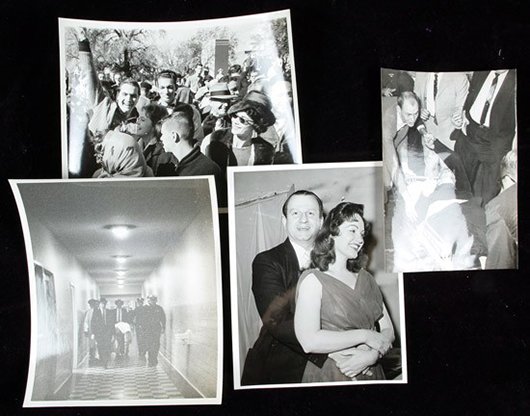 Cast-bronze statue of Osiris, 10in, retains early 1900s sales tag from Blanchard’s Egyptian Museum in Cairo, est. $10,000-$15,000. Ancient Resource image
Cast-bronze statue of Osiris, 10in, retains early 1900s sales tag from Blanchard’s Egyptian Museum in Cairo, est. $10,000-$15,000. Ancient Resource image
MONTROSE, Calif. (LAPRS) – In 2003, after years of producing and writing ancient-history documentaries for History Channel, Discovery Channel and other respected networks, Gabriel Vandervort took his considerable knowledge and love of antiquities down a different path. He founded Ancient Resource – a small specialty business that evolved into a big business with a staunchly supportive clientele. The final link that made Ancient Resource a globally recognized brand in its space was the establishment of an auction division, which has grown to a position of respect and acknowledged integrity in the marketplace.
Ancient Resource painstakingly authenticates and guarantees every item it sells, and that includes the 400 superior-quality lots to be offered in its December 7th Fine Ancient Artifacts Auction. Absentee and Internet live bidding will be available through LiveAuctioneers.
As is the tradition with Ancient Resource auction events, the first 20 to 25 lots contain pieces from various cultures, some at a price point suitable for beginners. They are followed by logically organized groupings of premier artifacts from specific cultures, chosen to please even the most discerning collector.
Lot 97, a marble Janiform bust of the Roman twin gods Hypnos and Thanatos, is particularly rare because there are so few, if any, other known portrait depictions of Thanatos as an adult. “A Janiform sculpture of the two brothers together puts this piece in a league of its own,” said Vandervort. The presale estimate is $40,000-$50,000.
Mosaics were a common feature in private homes and public buildings throughout the Roman Empire, from Africa to Antioch. “Not only are Roman mosaics of the 3rd to 5th century BC beautiful works of art, they also document the styles, weapons, food, flora and fauna of the period. Historically, they provide an accurate snapshot of what life was like,” said Vandervort. The December 7 sale includes Lot 102, a 33¼ by 21½ inch Roman mosaic depicting a woman in a toga, reclining on a chaise. One of the finer examples of its type, it is entered in the auction with a $25,000-$35,000 estimate.
Other Roman highlights include Lot 94, a marble torso of Eros estimated at $16,000-$20,000; and Lot 96, a marble ram carved out of a human-bone matrix, which is expected to make $16,000-$20,000.
The selection is rich with Ancient Egyptian rarities, including Lot 45A, a 10-inch cast-bronze statue of Osiris, god of the afterlife. In nuanced colors ranging from chocolate brown to ivy green, the well-sculpted and chased figure retains a previous (early 1900s) sales tag from Blanchard’s Egyptian Museum in Cairo. Estimate: $10,000-$15,000.
Also noteworthy in the Egyptian category is Lot 28A, a New Kingdom (circa 1570-1075 BC) limestone relief with hieroglyphic characters that include an owl, a reed, and a second bird. Ex Lipinsky collection, it is estimated at $6,000-$7,000. Lot 65, a large, carved basalt heart scarab, Late Period (circa 664-343 BC), is of a type that might have been placed within the wrappings of a mummy. Estimate: $2,500-$3,000.
The Ancient Greek section is led by Lot 97A, a stunning marble sfumato of Aphrodite from the island of Rhodes. The 18-inch-tall nude dates to the Late Hellenistic Period (circa 100-100 BC) and displays pleasing facial features, hair arranged in a coiled bun at the nape of the neck, and a body described in the auction catalog as “almost Rubenesque.” A marvelous work of Ancient Roman sculpture with provenance from a New York City private collection, Aphrodite is the anticipated top lot of the sale with an estimate of $150,000-$200,000.
Lot 183 is an Attic red-figure amphora with painting attributed to the Ethiop painter, who worked in the Early Free Style period (475-450 BC). The obverse depicts a man in a highly detailed robe, with a walking stick, while the reverse shows a warrior with a shield over one shoulder and a lance or javelin over the other. Estimate: $20,000-$25,000.
Lot 182, a large (16 2/5in tall) and impressive Etrusco-Corinthian black-figure olpe dates to the early 6th century BC. Its body is decorated with four registers of lions, bulls, ibex, owls and other birds separated by rosettes and floral elements. Formerly in the possession of a well-known Italian private collector beginning in the late 1940s, this important piece could reach $40,000-$50,000 at auction.
Although the vessel known as a rhyton is of Greek origin, many other cultures adopted the form, including the Almash, who occupied much of what is now northern Iran. Lot 153 is an Almash rhyton in the form of a stag. “We hesitate to use the term ‘museum worthy,’ but this stag is in a remarkable state of preservation and deserves that description,” said Vandervort. Its pre-auction estimate is $10,000-$15,000.
A sizable selection of fine Pre-Columbian art includes Lot 279, a large Amalito stone mask from Argentina. Dating to the 14th century, its well-preserved visage displays desirable evidence of mineral deposits gained over several centuries. With provenance that includes a previous Sotheby’s sale, it is estimated at $4,000-$6,000.
The rich variety in Ancient Resource’s December 7 auction includes many other in-demand categories: Roman and other early glass; oil lamps, seals and intaglios, Native Americana, and African, tribal and ethnographic art.
Bidders can feel completely confident about the antiquities offered in the sale, said Vandervort. “I turn down 95 percent of what’s offered to me because I’m not convinced about the items’ authenticity or provenance. We represent only authentic pieces that are legal to sell and which were obtained from carefully screened consignors.”
For additional information about any item in Ancient Resource’s December 7 auction, contact Gabriel Vandervort by calling 805-427-4432 or 818-425-9633; or email ancientresourceauctions@yahoo.com. Visit www.AncientResourceAuctions.com. View the online auction catalog and sign up to bid absentee or live via the Internet on auction day at www.LiveAuctioneers.com
# # #
 View the fully illustrated catalog and register to bid absentee or live via the Internet as the sale is taking place by logging on to www.LiveAuctioneers.com.
View the fully illustrated catalog and register to bid absentee or live via the Internet as the sale is taking place by logging on to www.LiveAuctioneers.com.
ADDITIONAL LOTS OF NOTE
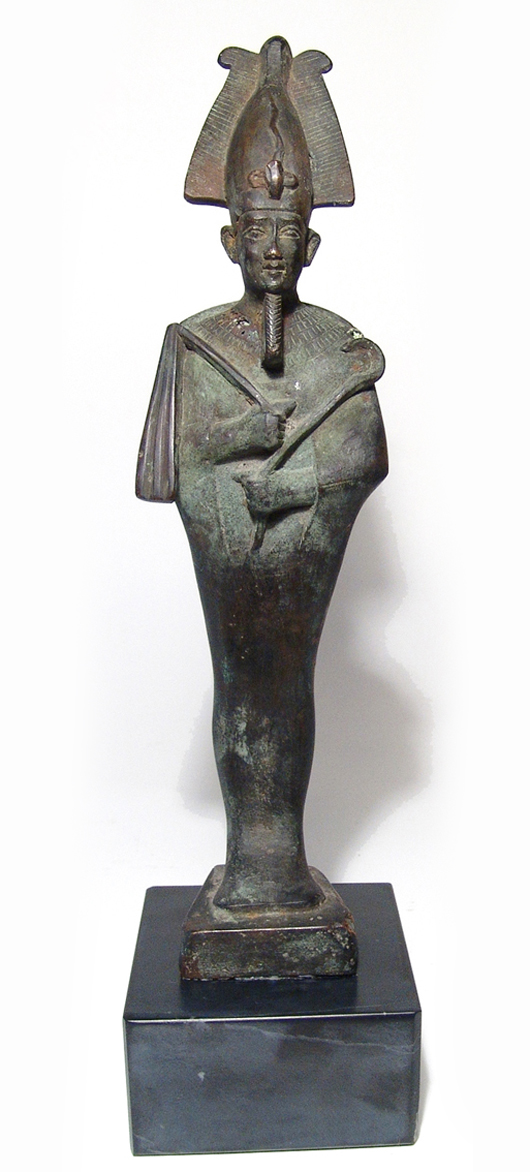 Cast-bronze statue of Osiris, 10in, retains early 1900s sales tag from Blanchard’s Egyptian Museum in Cairo, est. $10,000-$15,000. Ancient Resource image
Cast-bronze statue of Osiris, 10in, retains early 1900s sales tag from Blanchard’s Egyptian Museum in Cairo, est. $10,000-$15,000. Ancient Resource image
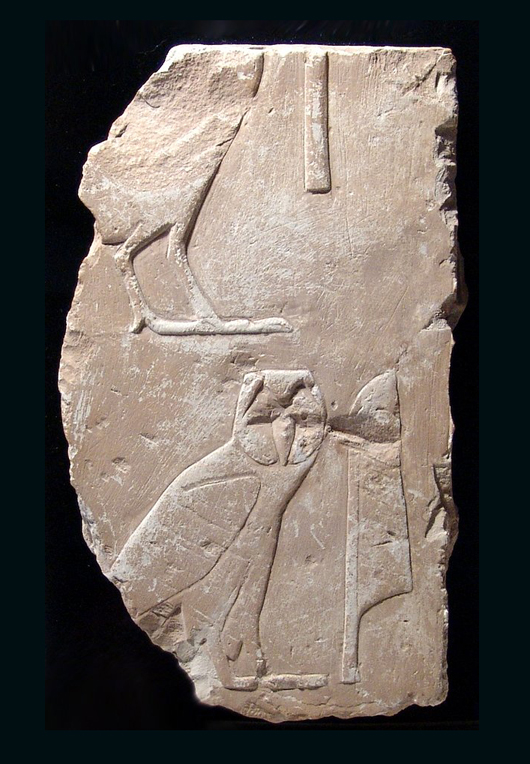 New Kingdom (circa 1570-1075 BC) limestone relief with hieroglyphic characters, ex Lipinsky collection, est. $6,000-$7,000. Ancient Resource image
New Kingdom (circa 1570-1075 BC) limestone relief with hieroglyphic characters, ex Lipinsky collection, est. $6,000-$7,000. Ancient Resource image
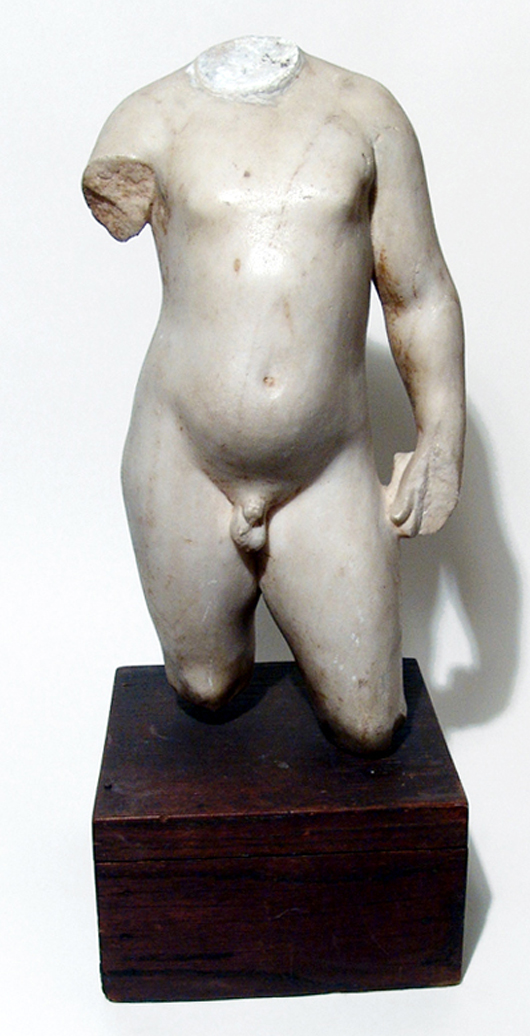 Roman marble torso of Eros, est. $16,000-$20,000. Ancient Resource image
Roman marble torso of Eros, est. $16,000-$20,000. Ancient Resource image
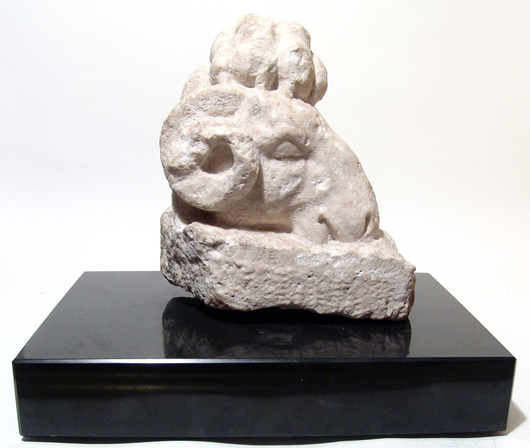 Roman marble ram carved from human-bone matrix, est. $16,000-$20,000. Ancient Resource image
Roman marble ram carved from human-bone matrix, est. $16,000-$20,000. Ancient Resource image
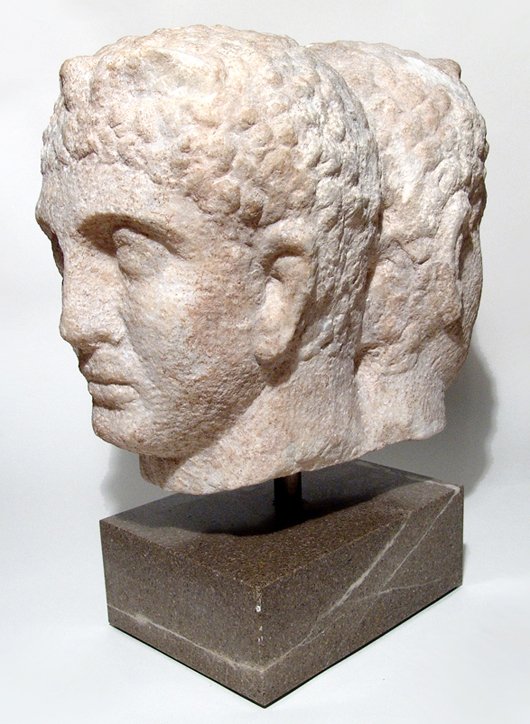 Marble Janiform bust of Roman twin gods Hypnos and Thanatos, est. $40,000-$50,000. Ancient Resource image
Marble Janiform bust of Roman twin gods Hypnos and Thanatos, est. $40,000-$50,000. Ancient Resource image
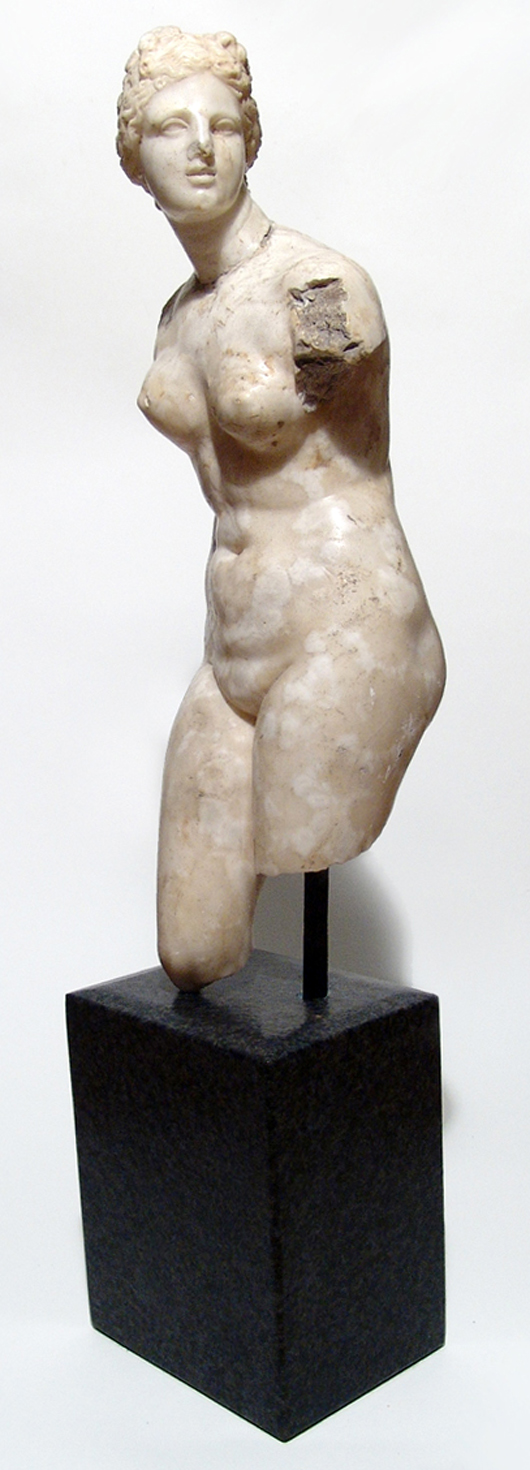 Greek marble sfumato of Aphrodite from the island of Rhodes, 18in, Late Hellenistic Period (circa 200-100 BC), est. $150,000-$200,000. Ancient Resource image
Greek marble sfumato of Aphrodite from the island of Rhodes, 18in, Late Hellenistic Period (circa 200-100 BC), est. $150,000-$200,000. Ancient Resource image
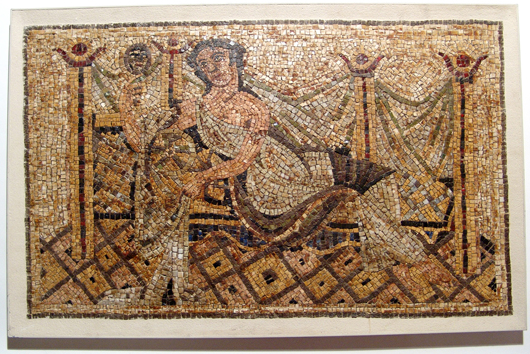 Roman mosaic of woman reclining on chaise, 33¼ by 21½ inch, 3rd to 5th century BC, est. $25,000-$35,000. Ancient Resource image
Roman mosaic of woman reclining on chaise, 33¼ by 21½ inch, 3rd to 5th century BC, est. $25,000-$35,000. Ancient Resource image
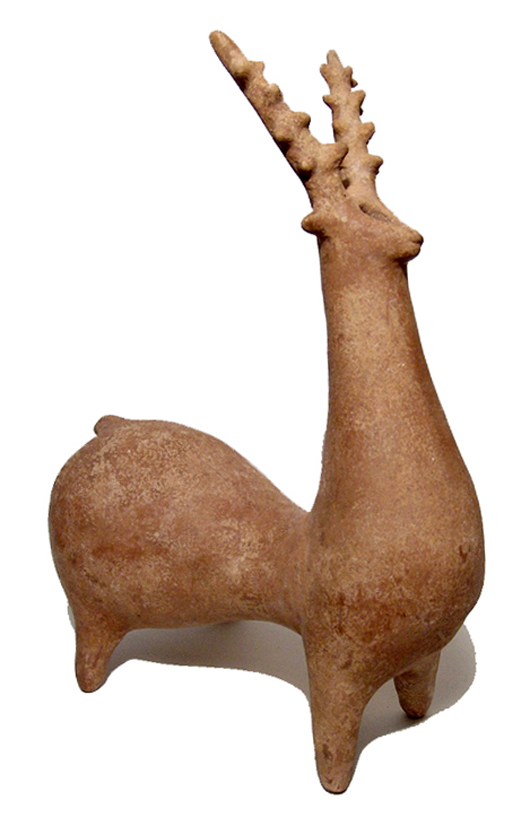 Almash rhyton in the form of a stag, beautifully preserved, est. $10,000-$15,000. Ancient Resource image
Almash rhyton in the form of a stag, beautifully preserved, est. $10,000-$15,000. Ancient Resource image
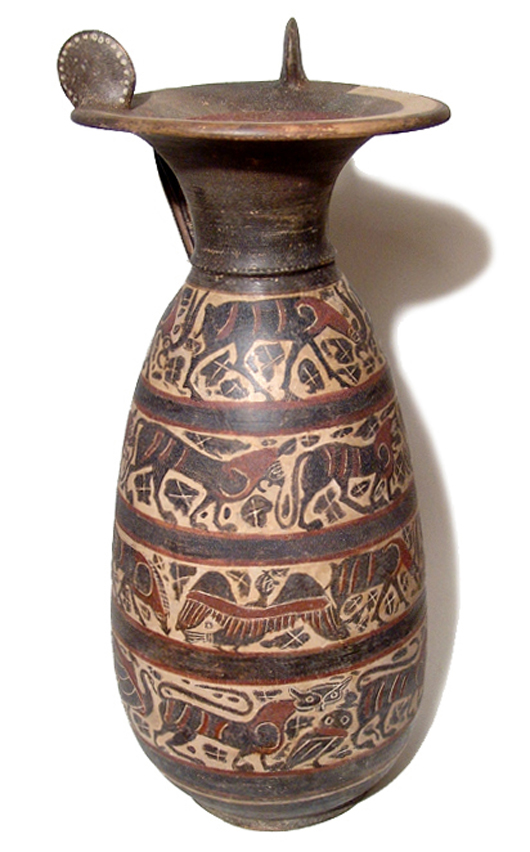 Etrusco-Corinthian black-figure olpe, early 6th century BC, 16 2/5in tall, est. $40,000-$50,000. Ancient Resource image
Etrusco-Corinthian black-figure olpe, early 6th century BC, 16 2/5in tall, est. $40,000-$50,000. Ancient Resource image
 Attic red-figure amphora with painting attributed to the Ethiop painter, Early Free Style period (475-450 BC), est. $20,000-$25,000. Ancient Resource image
Attic red-figure amphora with painting attributed to the Ethiop painter, Early Free Style period (475-450 BC), est. $20,000-$25,000. Ancient Resource image
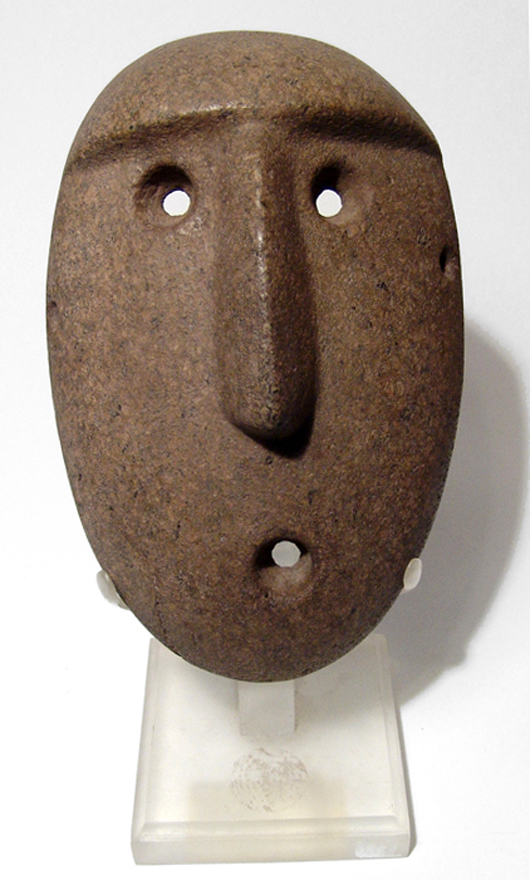 From an extensive selection of Pre-Columbian art, a large 14th-centuryAmalito stone mask, Argentina, est. $4,000-$6,000. Ancient Reso
From an extensive selection of Pre-Columbian art, a large 14th-centuryAmalito stone mask, Argentina, est. $4,000-$6,000. Ancient Reso
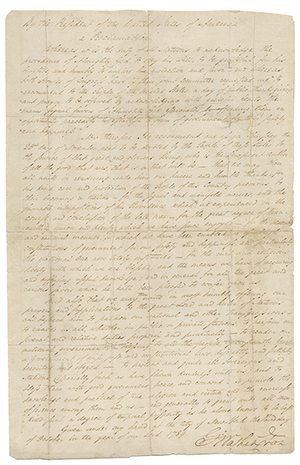
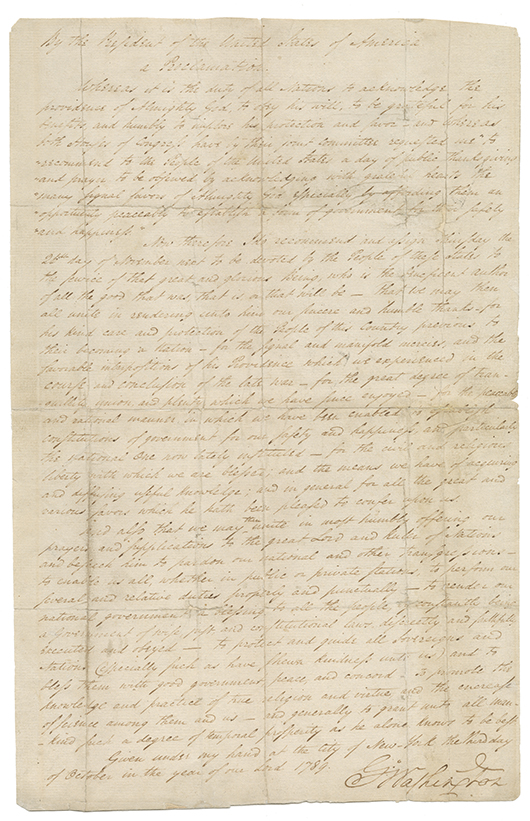
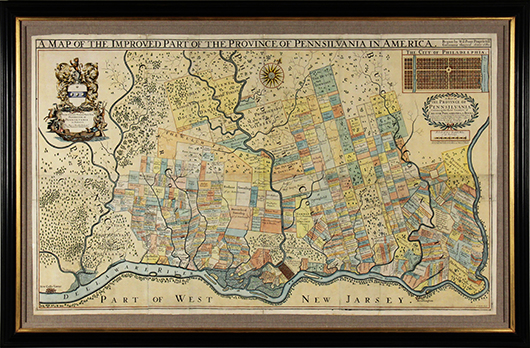




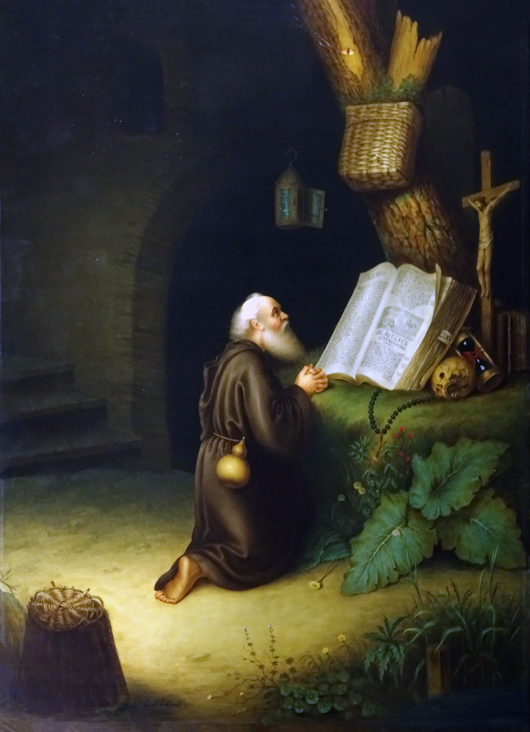
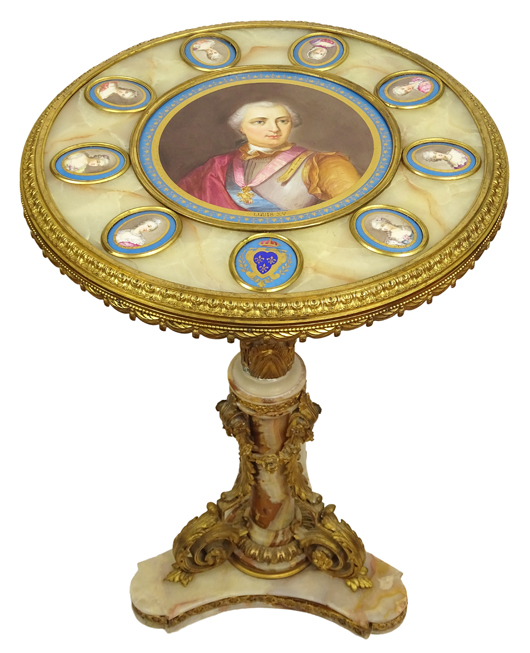
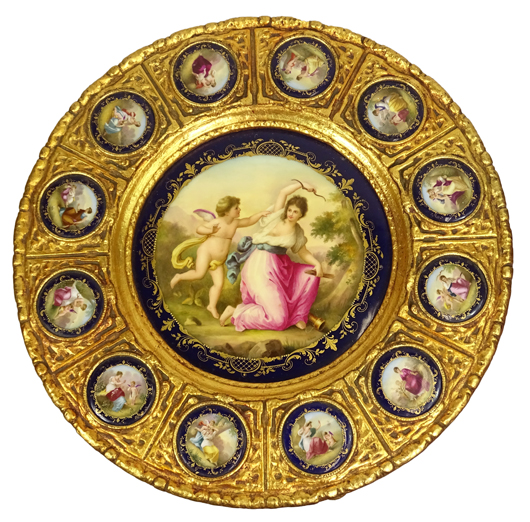
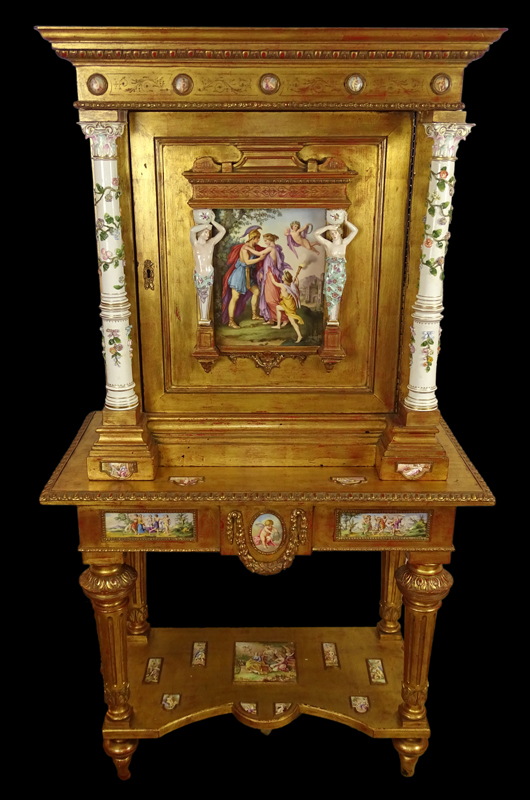
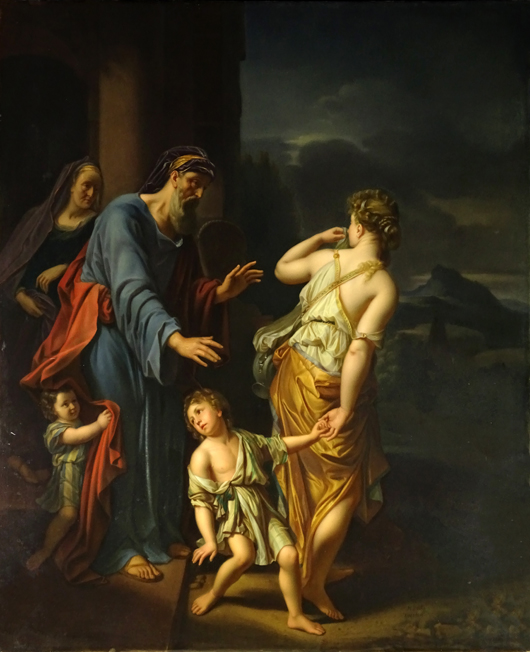


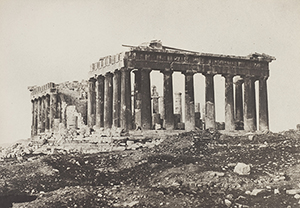
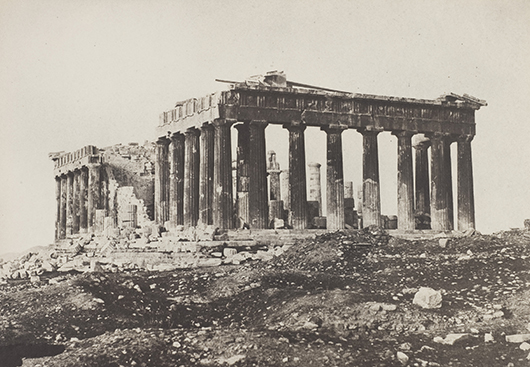
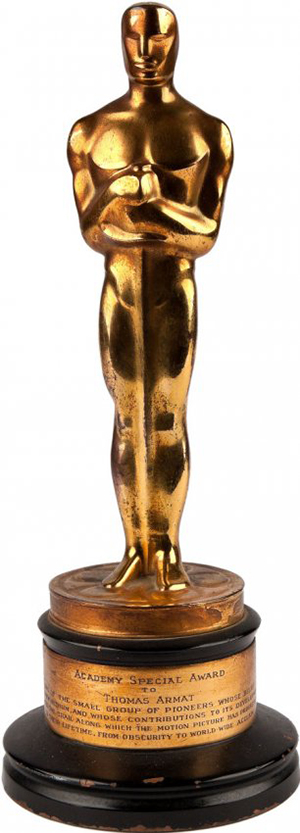






 Cast-bronze statue of Osiris, 10in, retains early 1900s sales tag from Blanchard’s Egyptian Museum in Cairo, est. $10,000-$15,000. Ancient Resource image
Cast-bronze statue of Osiris, 10in, retains early 1900s sales tag from Blanchard’s Egyptian Museum in Cairo, est. $10,000-$15,000. Ancient Resource image New Kingdom (circa 1570-1075 BC) limestone relief with hieroglyphic characters, ex Lipinsky collection, est. $6,000-$7,000. Ancient Resource image
New Kingdom (circa 1570-1075 BC) limestone relief with hieroglyphic characters, ex Lipinsky collection, est. $6,000-$7,000. Ancient Resource image Roman marble torso of Eros, est. $16,000-$20,000. Ancient Resource image
Roman marble torso of Eros, est. $16,000-$20,000. Ancient Resource image Roman marble ram carved from human-bone matrix, est. $16,000-$20,000. Ancient Resource image
Roman marble ram carved from human-bone matrix, est. $16,000-$20,000. Ancient Resource image Marble Janiform bust of Roman twin gods Hypnos and Thanatos, est. $40,000-$50,000. Ancient Resource image
Marble Janiform bust of Roman twin gods Hypnos and Thanatos, est. $40,000-$50,000. Ancient Resource image Greek marble sfumato of Aphrodite from the island of Rhodes, 18in, Late Hellenistic Period (circa 200-100 BC), est. $150,000-$200,000. Ancient Resource image
Greek marble sfumato of Aphrodite from the island of Rhodes, 18in, Late Hellenistic Period (circa 200-100 BC), est. $150,000-$200,000. Ancient Resource image Roman mosaic of woman reclining on chaise, 33¼ by 21½ inch, 3rd to 5th century BC, est. $25,000-$35,000. Ancient Resource image
Roman mosaic of woman reclining on chaise, 33¼ by 21½ inch, 3rd to 5th century BC, est. $25,000-$35,000. Ancient Resource image Almash rhyton in the form of a stag, beautifully preserved, est. $10,000-$15,000. Ancient Resource image
Almash rhyton in the form of a stag, beautifully preserved, est. $10,000-$15,000. Ancient Resource image Etrusco-Corinthian black-figure olpe, early 6th century BC, 16 2/5in tall, est. $40,000-$50,000. Ancient Resource image
Etrusco-Corinthian black-figure olpe, early 6th century BC, 16 2/5in tall, est. $40,000-$50,000. Ancient Resource image Attic red-figure amphora with painting attributed to the Ethiop painter, Early Free Style period (475-450 BC), est. $20,000-$25,000. Ancient Resource image
Attic red-figure amphora with painting attributed to the Ethiop painter, Early Free Style period (475-450 BC), est. $20,000-$25,000. Ancient Resource image From an extensive selection of Pre-Columbian art, a large 14th-centuryAmalito stone mask, Argentina, est. $4,000-$6,000. Ancient Reso
From an extensive selection of Pre-Columbian art, a large 14th-centuryAmalito stone mask, Argentina, est. $4,000-$6,000. Ancient Reso
